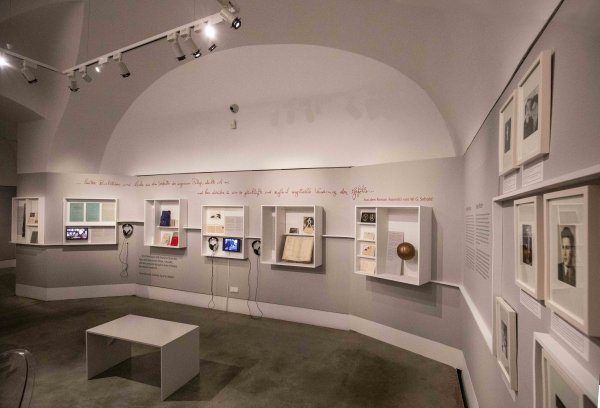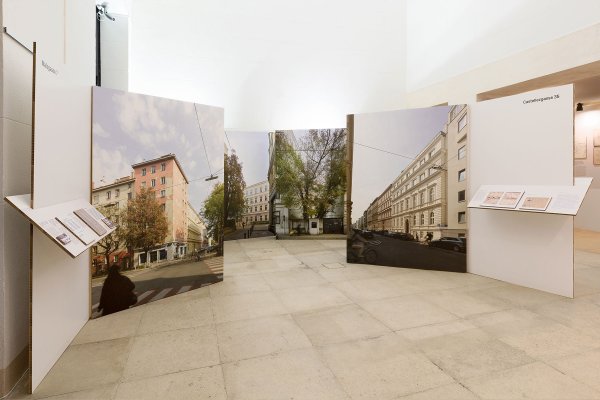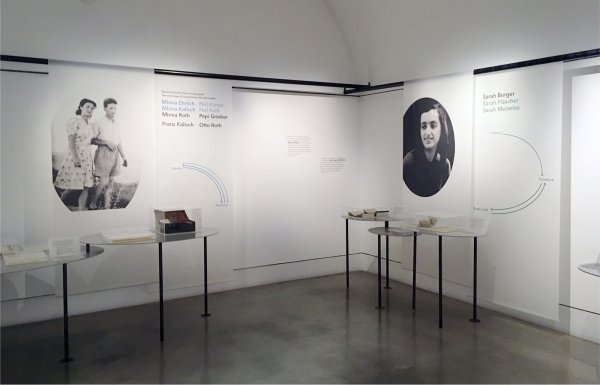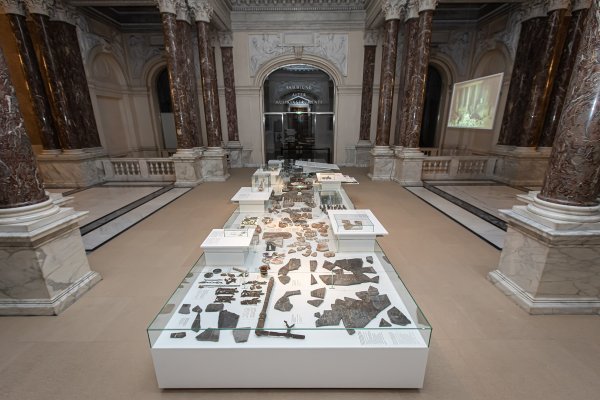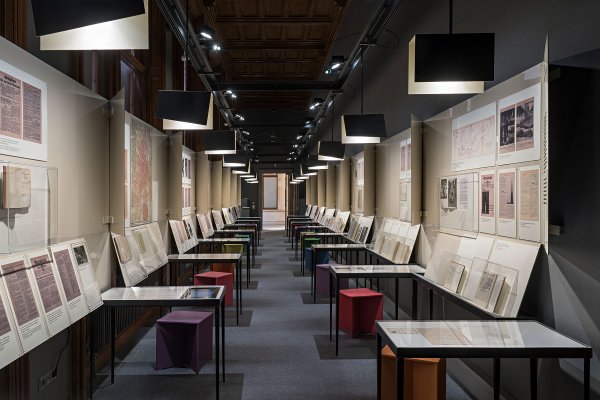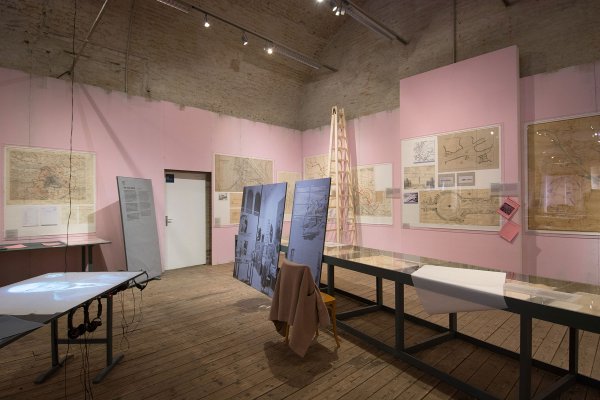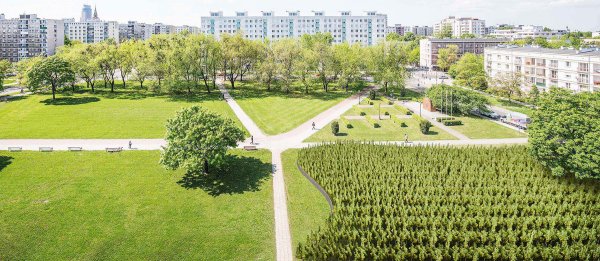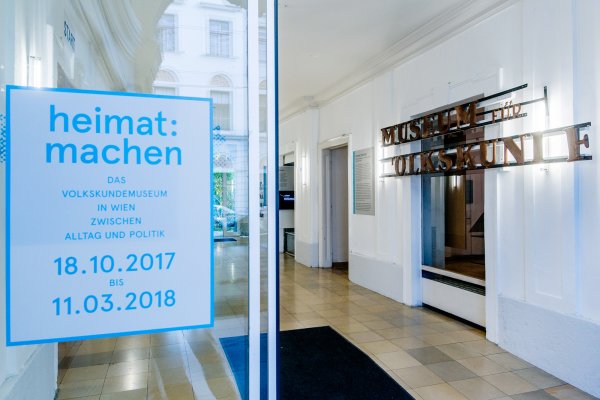Disposing of Hitler: Out of the Cellar, Into the Museum
Exhibition at Austrian Museum of Contemporary History, 03.12.2021 – 08.01.2023
Vienna (AT)
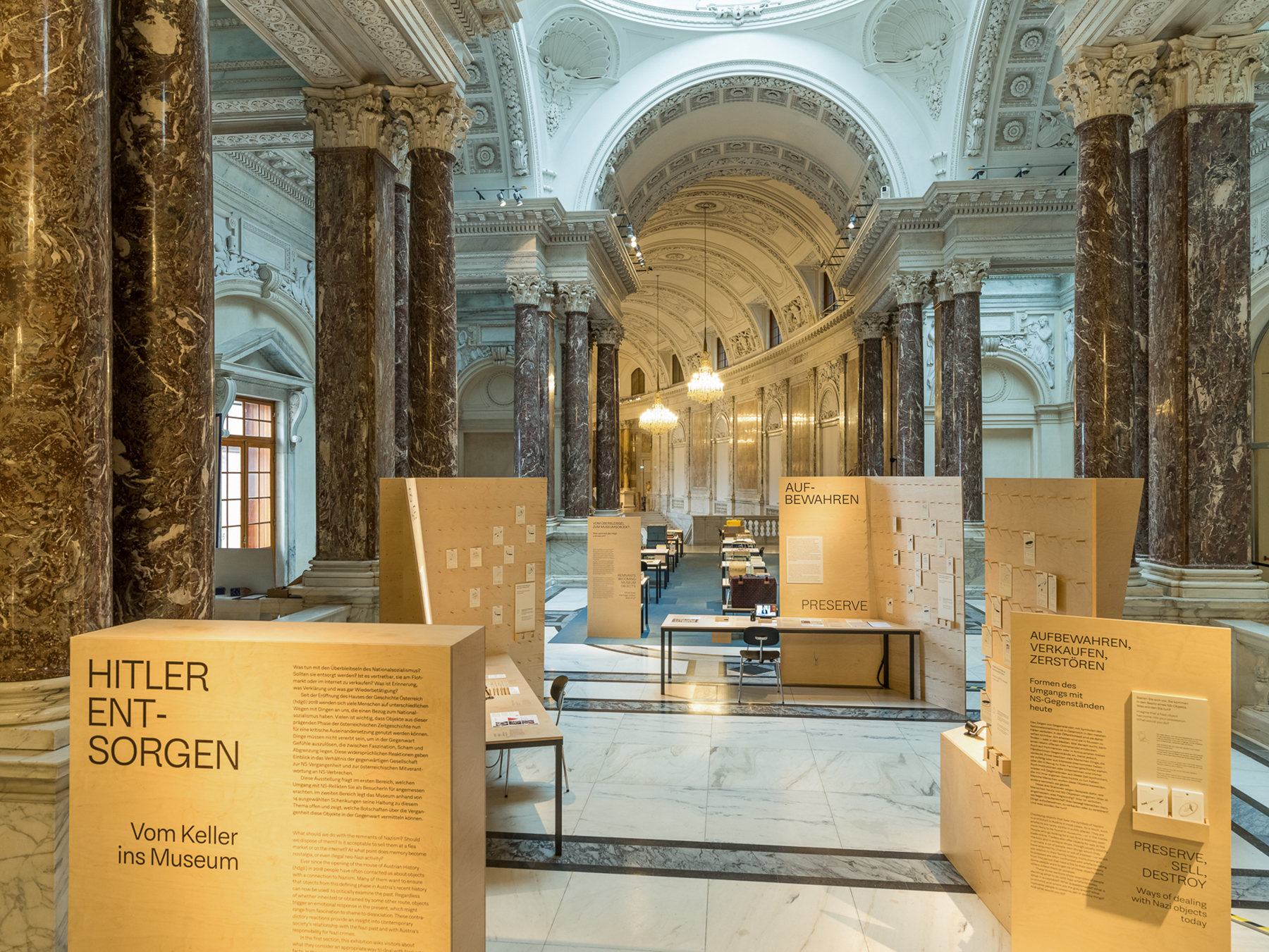
Exhibiting Nazi Stuff
Gabu Heindl
Does Nazi stuff belong in the House of Austrian History? And how should a museum display the things that people find in the attic, in the cellar, or after someone has died? Which items should the museum archive, or even accept in the first place, and why? The exhibition Disposing of Hitler: Out of the Cellar, Into the Museum is about the museum as a place of “disposal”. In concrete terms, it is about things with a connection to Nazism which are by all means historically charged, but also sometimes banal. How do they arrive at the museum, why, from whom, from what motivation, in what kind of packaging? The exhibition design responds to the problem of how to deal with the charged nature of Nazi objects by not imbuing them with any additional aura. The temporary exhibition is located on the uppermost plateau (“Alma-Rosé-Plateau”) of the imperial staircase, right next to the altan, which as the “Hitler balcony” has itself become a kind of Nazi relic.
As for the beginning of a visit of the exhibition: When a visitor buys their ticket, they are also given a small card with a drawing on it of a Nazi object that has been found. The card also asks them to decide what they would do if they found that object. The exhibition architecture then immediately welcomes the visitor with three informative sections looking at making that decision: destroy, preserve or sell? 1, 2 to 3, it’s up to you. Is it really that simple? Rather, these sections give a sense of the complexity of this decision, for example the different possibilities for “selling” (via Ebay, at a flea market or even on the Dark Net), or whether “preserving” means keeping it yourself or “conserving” it for the public good, for example by sending the object to a museum. The sections are positioned to create a triangular space that is interactive and communicative, a transformative space where these deliberations are translated into open, dynamic forms with a table and three walls, onto which the visitor can place their card, their decision visible for all visitors to see.
The second and central part of the exhibition leads on from the section about “preserving” to the work of the museum with a focus on the items sent as “donations”. Fourteen simple work tables for the objects with side tables for the packaging stand on a large piece of office carpet laid over the stone floor of the Plateau. With its appearance of an office or a work room in which objects arriving at the museum would be examined and assessed, the exhibition presents a workday setting. The information on the tables allows visitors to make sense of the museum’s working practices by showing how donations are queried, classified and analysed in terms of their value for the museum. The packaging is no less valuable for the knowledge it can provide—when it comes to the question of how objects arrive at museum, this is why also the range of stories connected to the objects’ packaging (shame, pride, uncertainty, etc.) is exhibited. From one perspective the tables are perfectly aligned, from another they are loosely arranged. There is no set order in which the discussions about the various objects should be followed; the field invites visitors to choose freely and initiate their own investigations. Office chairs are provided for visitors who want to study something in greater depth.
Not least, this field of everyday museum work is situated in a spatial bracket between the largest exhibition pieces—to the left the exit to the altan of the Neue Burg (“Hitler balcony”) and to the right the entrance to the Collection of Historic Musical Instruments. While a rather large exhibition board next to the Collection of Historic Musical Instruments deals critically with the institution and its collection, its companion piece, a board of the same height by the altan, thematises the extent to which this structural element—the “Hitler balcony”—has itself been “disposed of”, namely through creation of the hdgö right next to the altan. Yet no active forms of historical work are possible outside while the balcony remains closed off. It is therefore precisely in this location that the theme of burdened objects from the Nazi era, likewise the wish to “dispose of Hitler”, are particularly apt and revealing.
Clients
House of Austrian History
Planning period
2021
Exhibition
03.12.2021 – 09.01.2023
Curators
Stefan Benedik, Laura Langeder, Monika Sommer
Exhibition graphic
Theresa Hattinger, Maria Kanzler
Exhibition architecture
GABU Heindl Architektur
Gabu Heindl, Hannah Niemand
Assemblies, production display Martina Berger/ Nägel mit Köpfen
Photos
Klaus Pichler
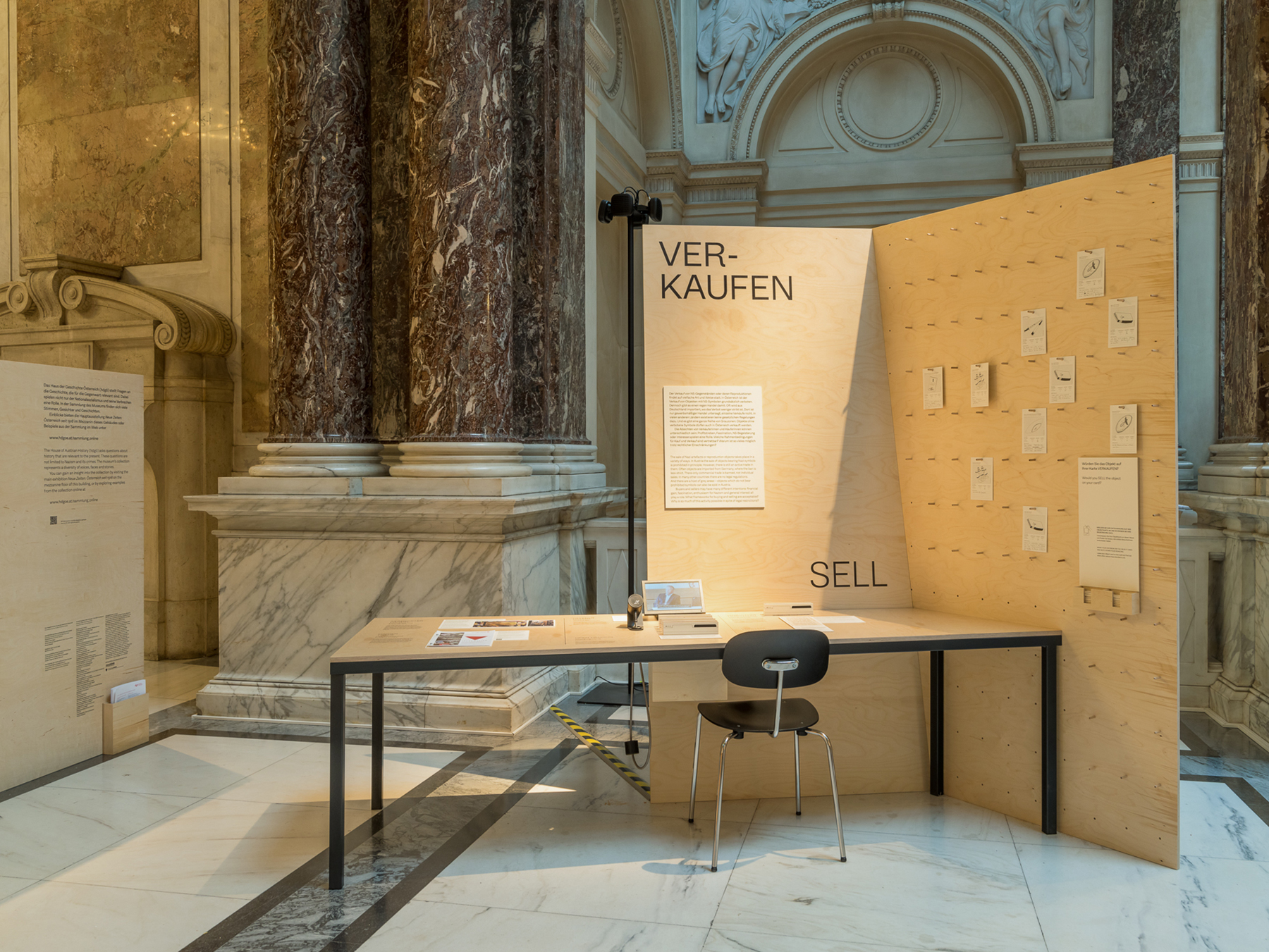
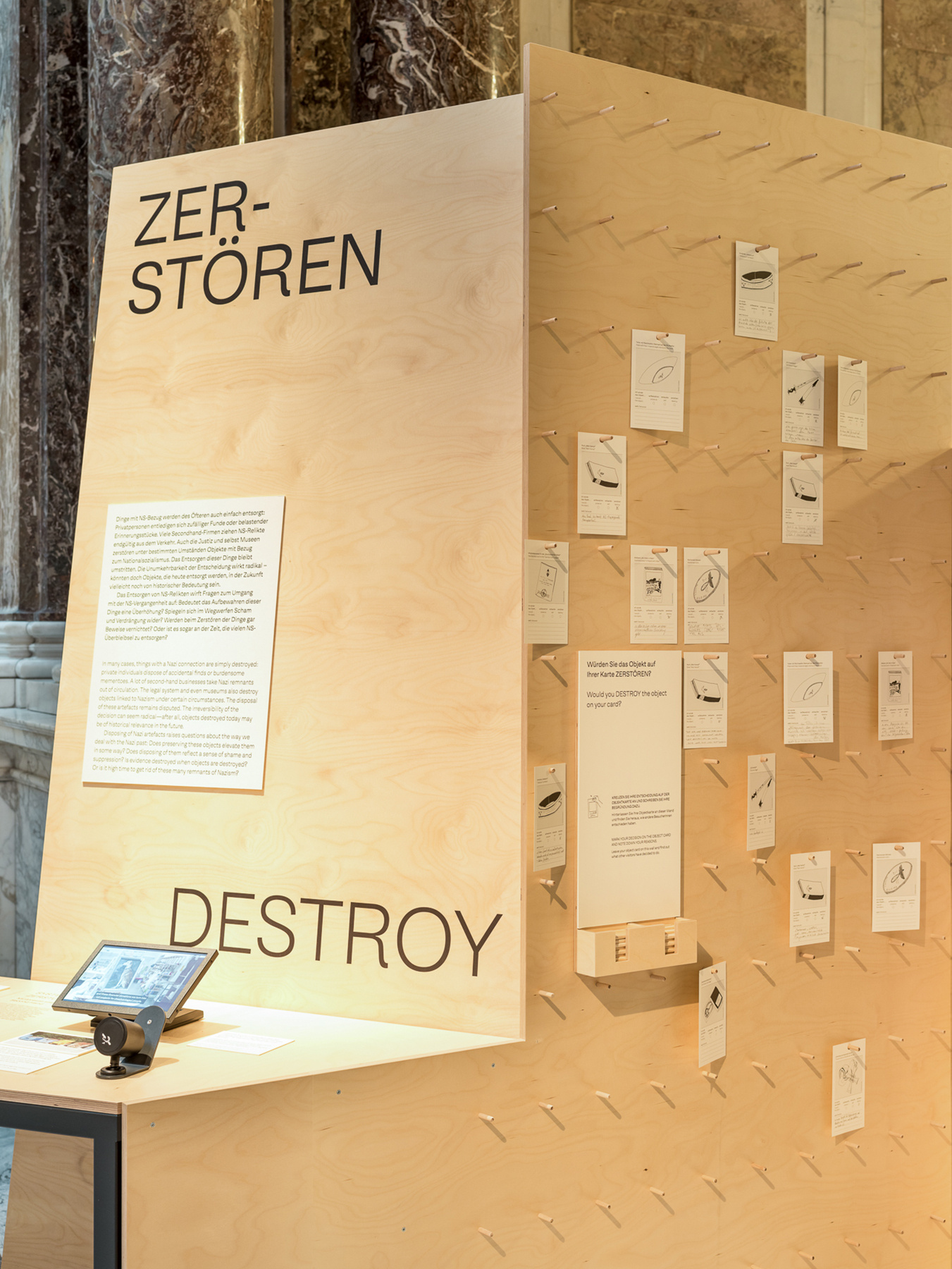
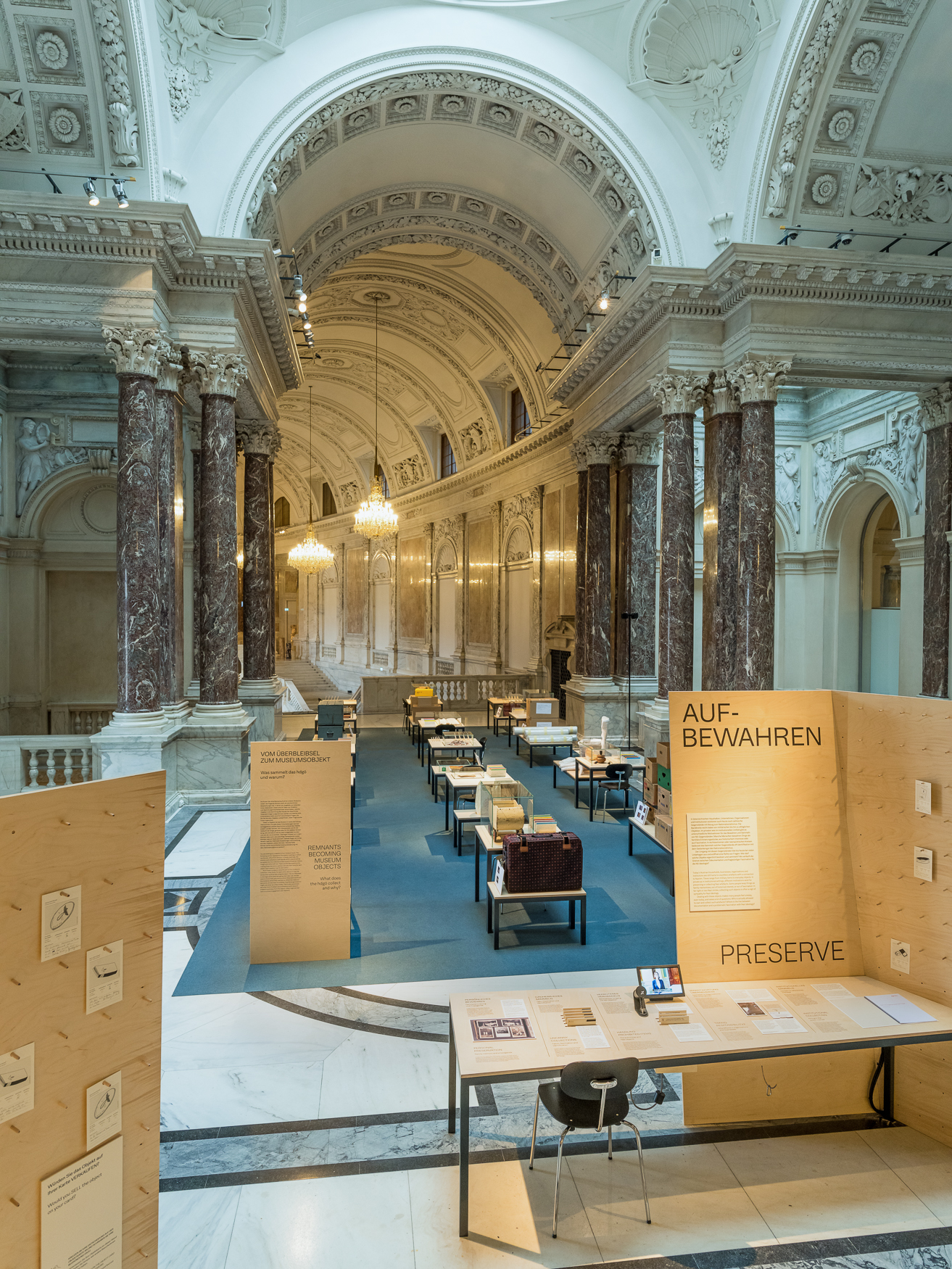
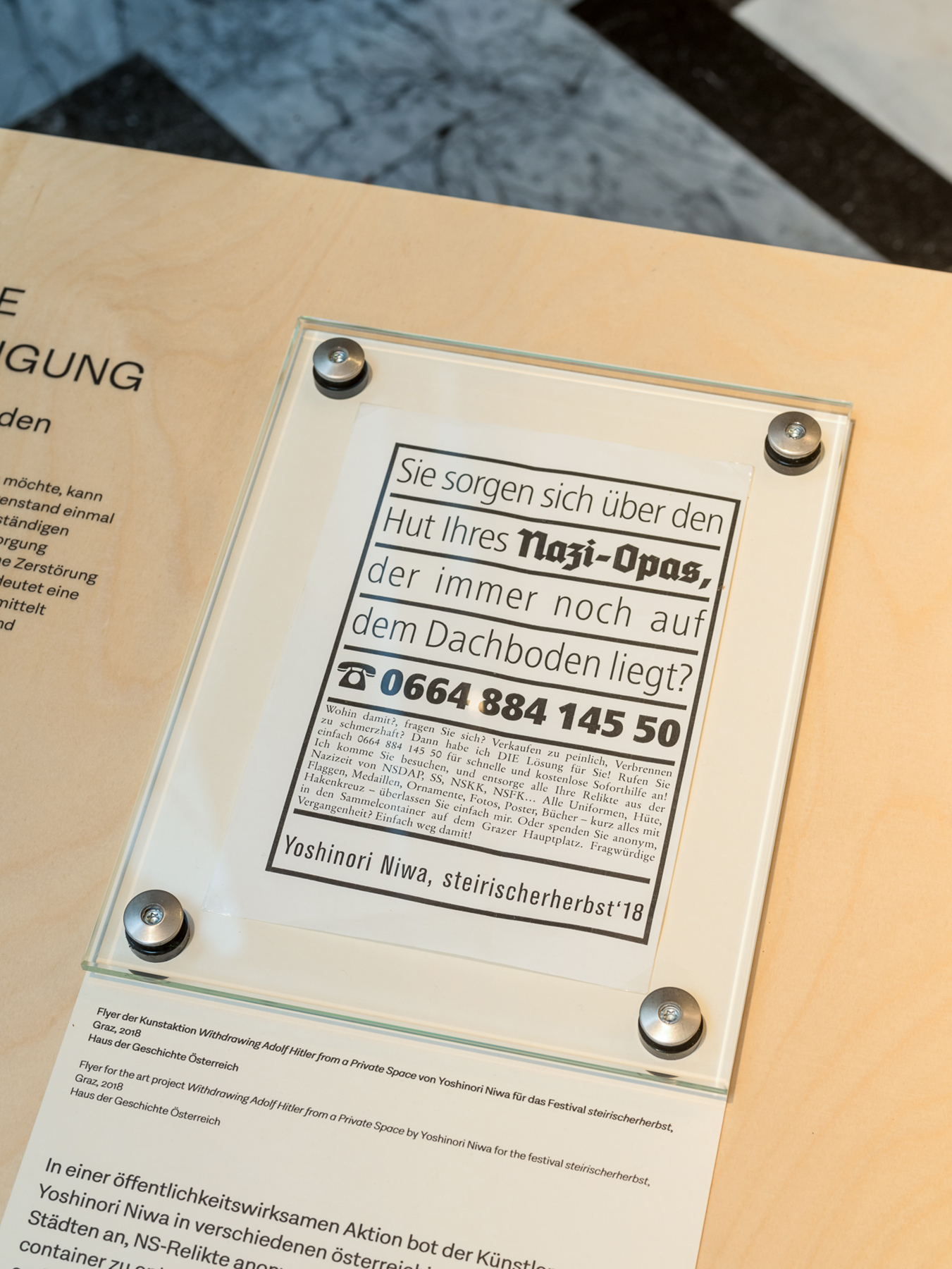
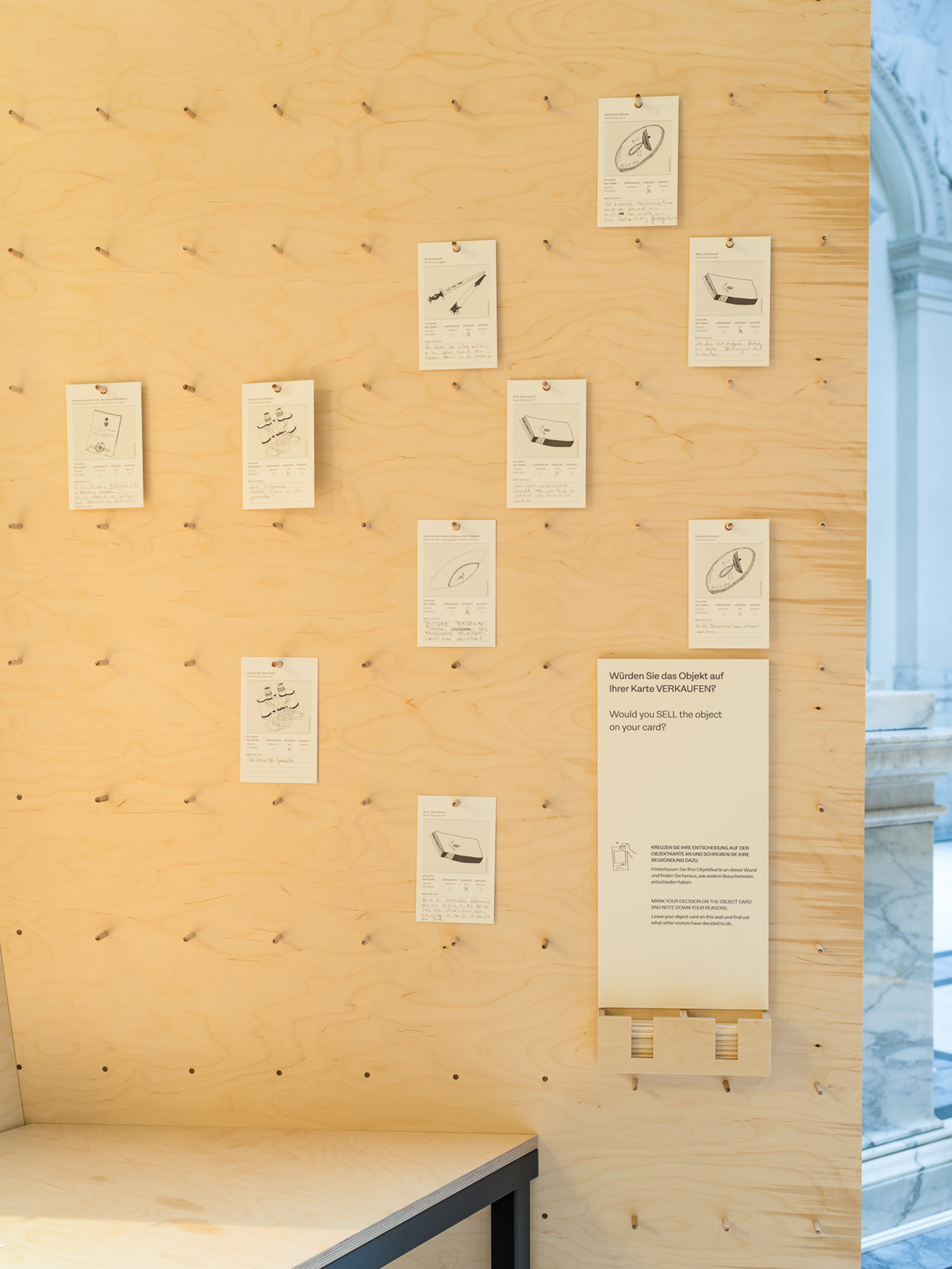
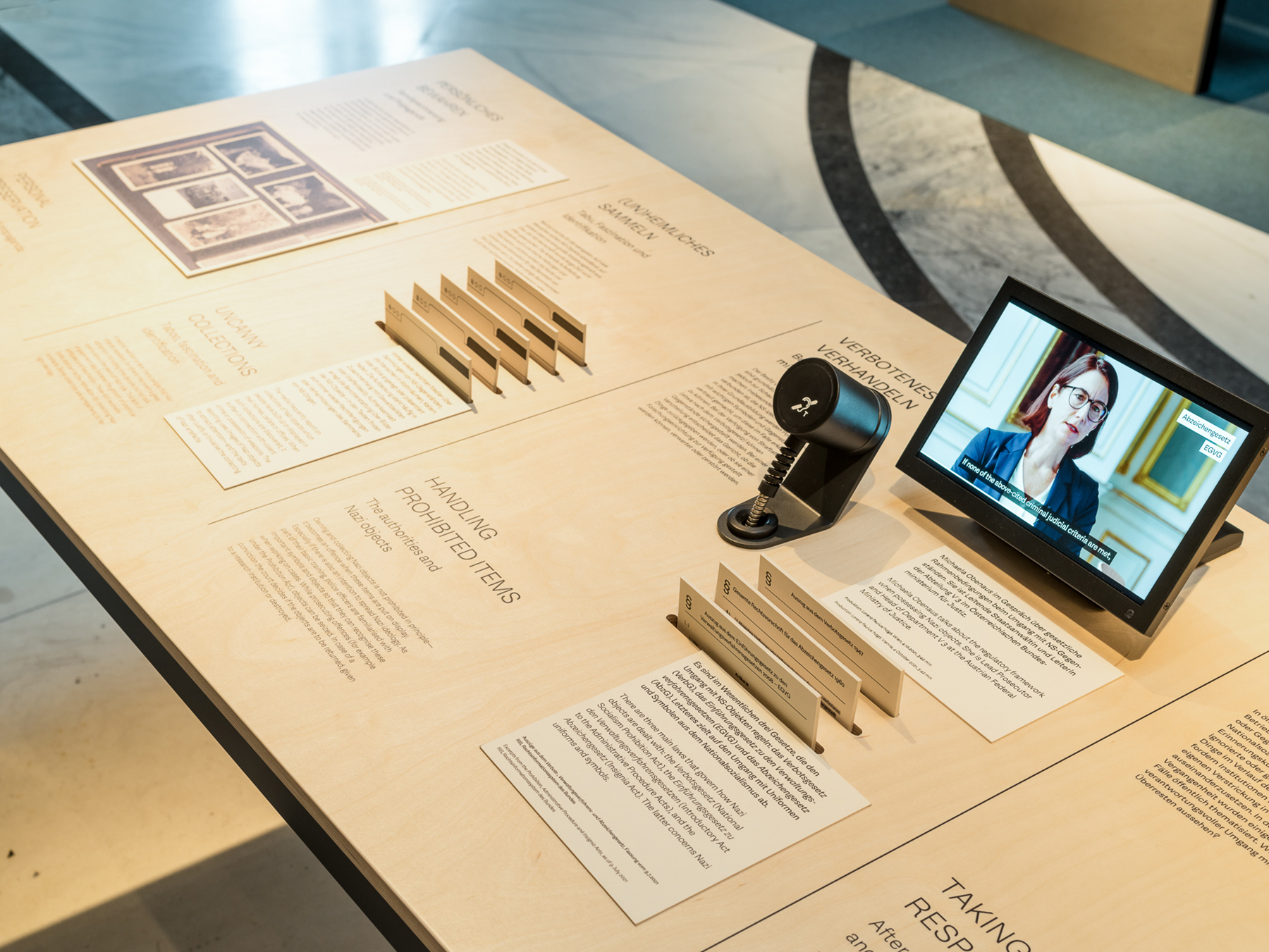
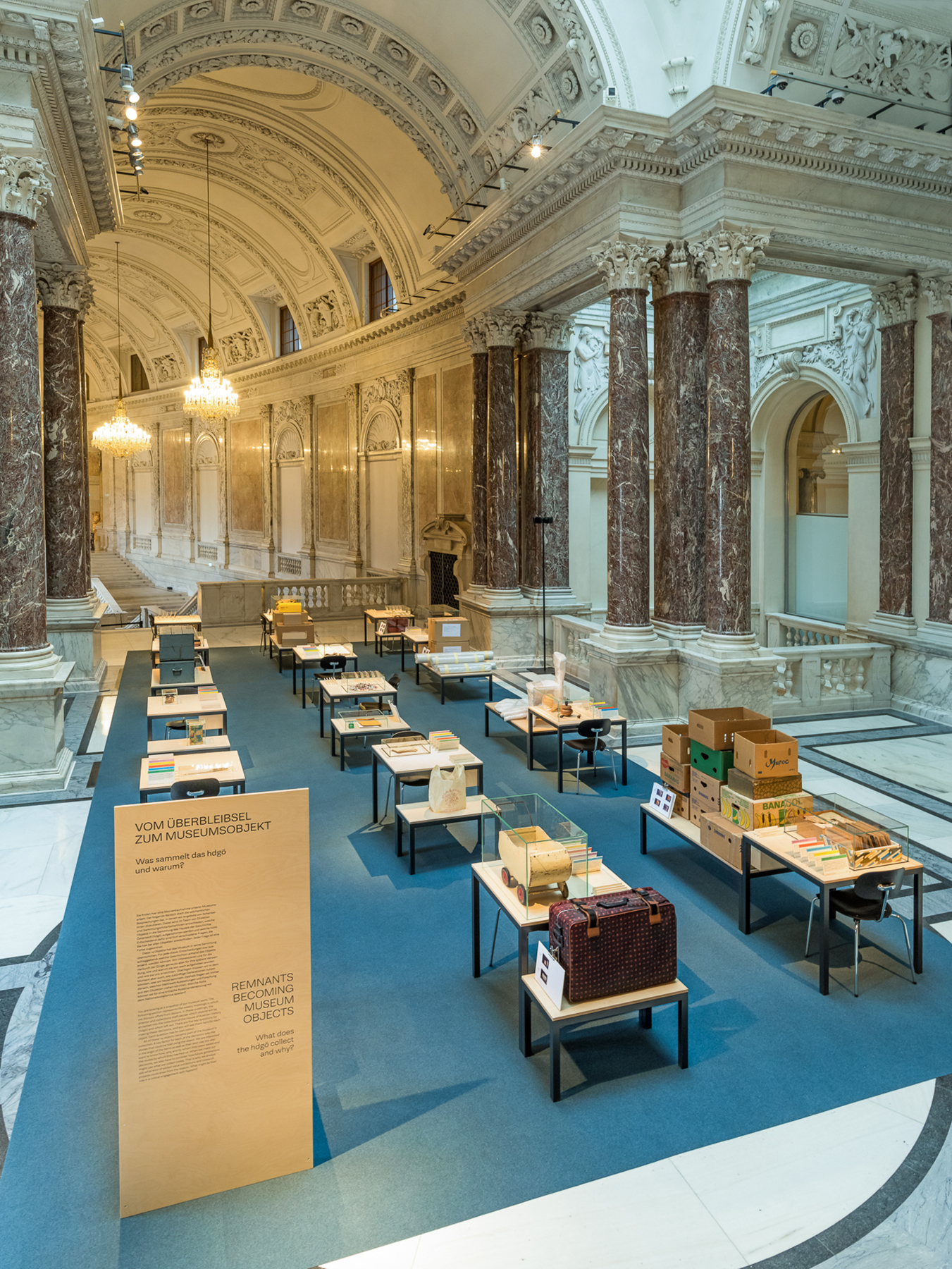
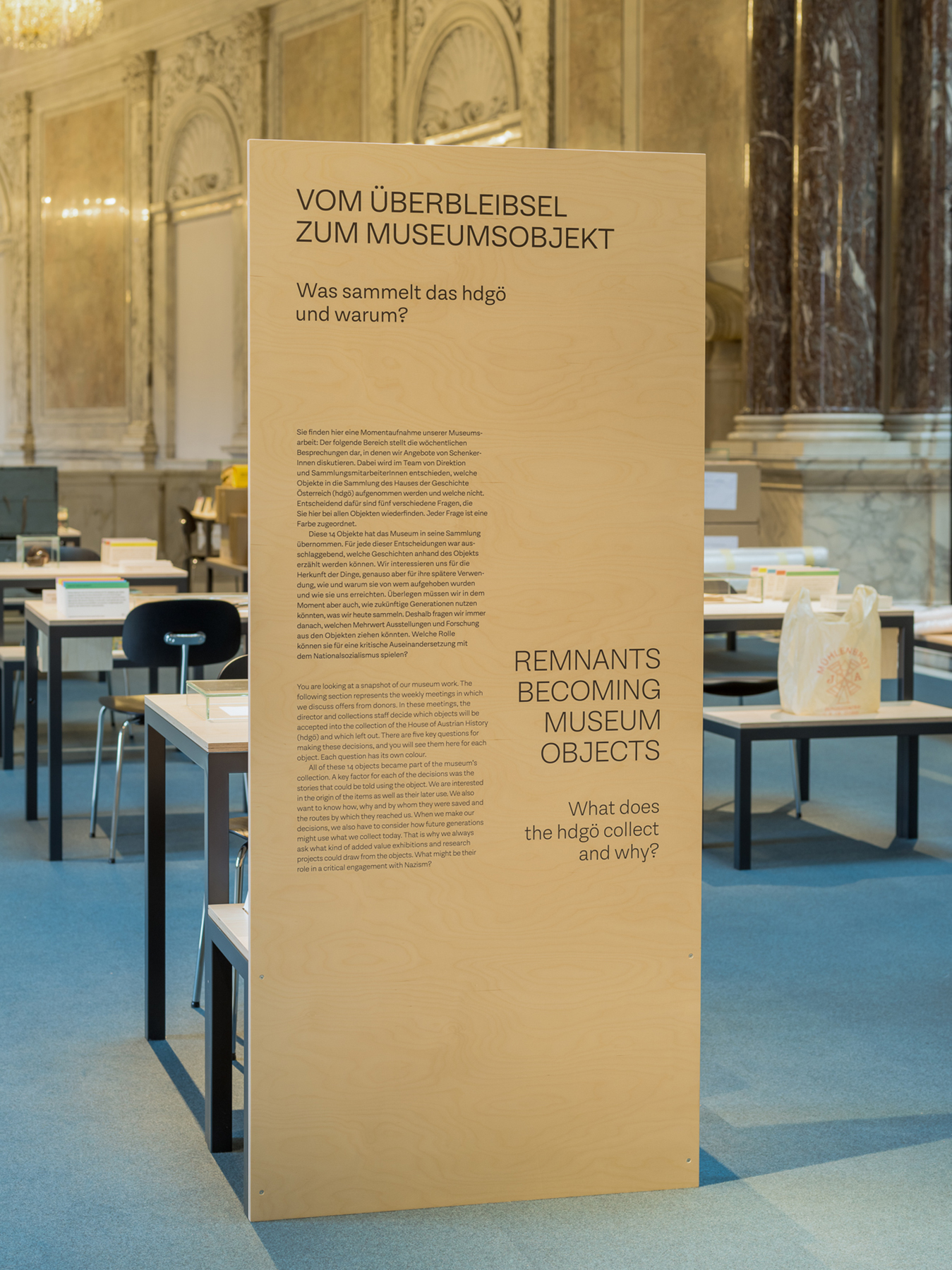
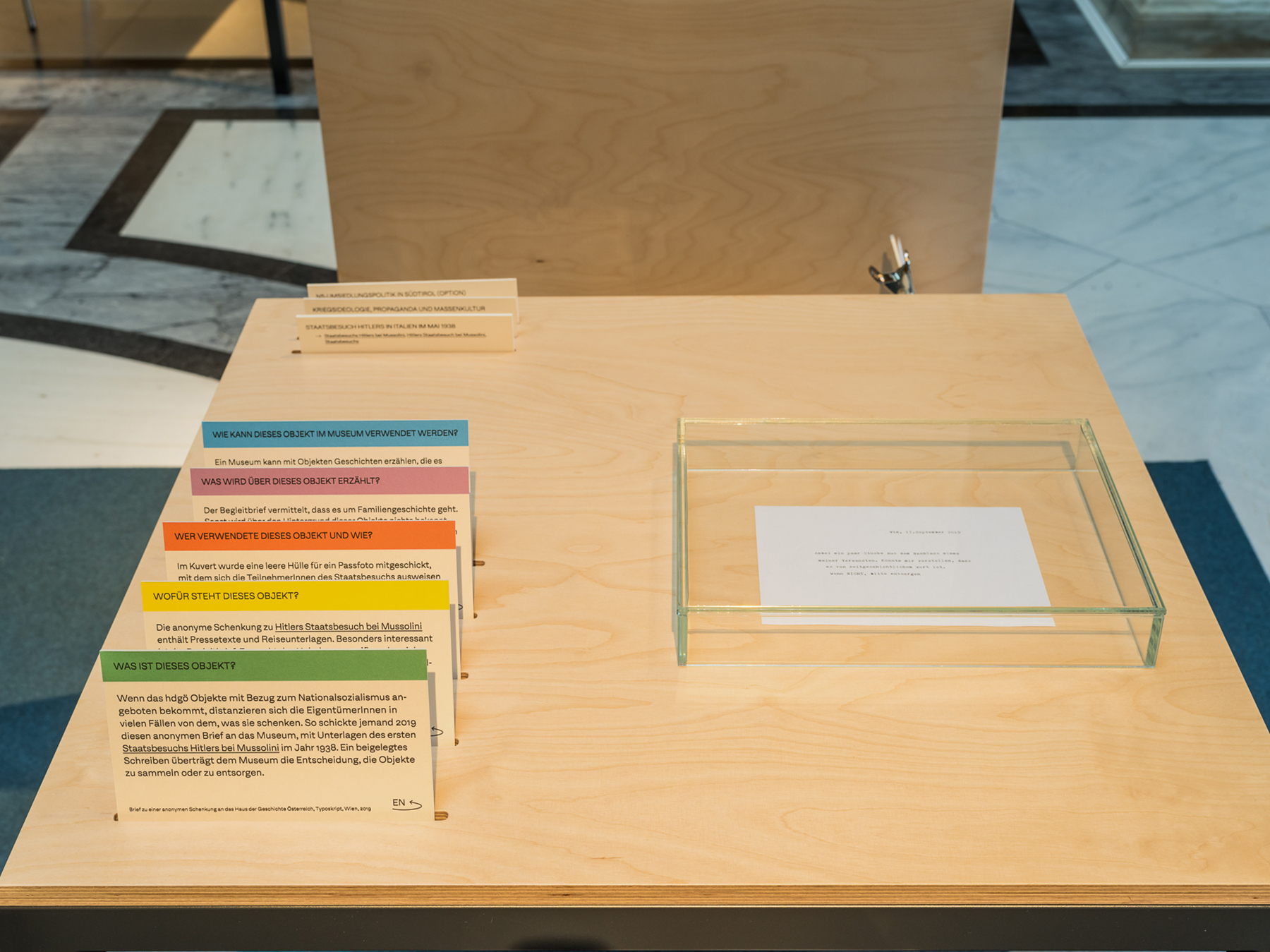
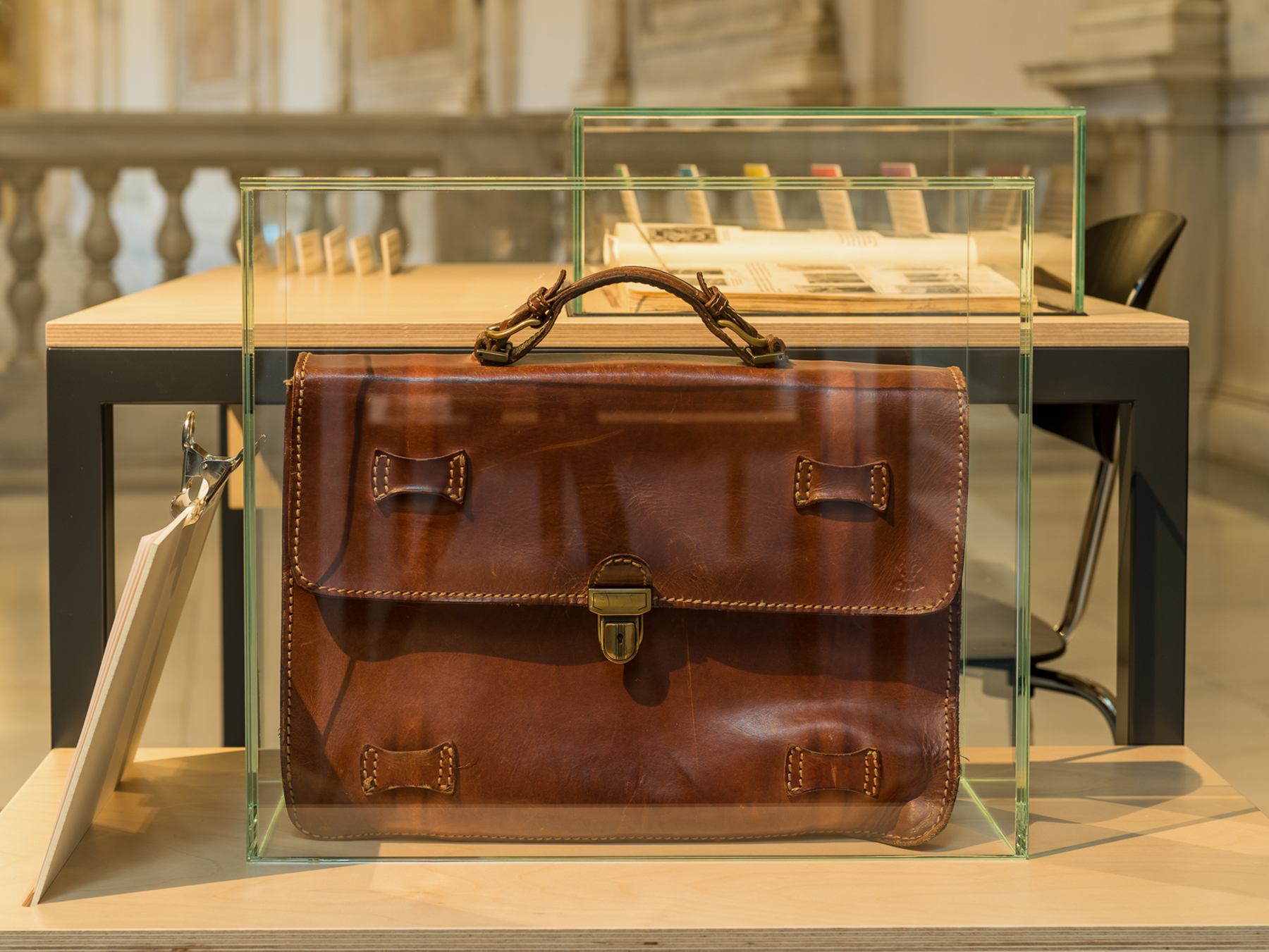
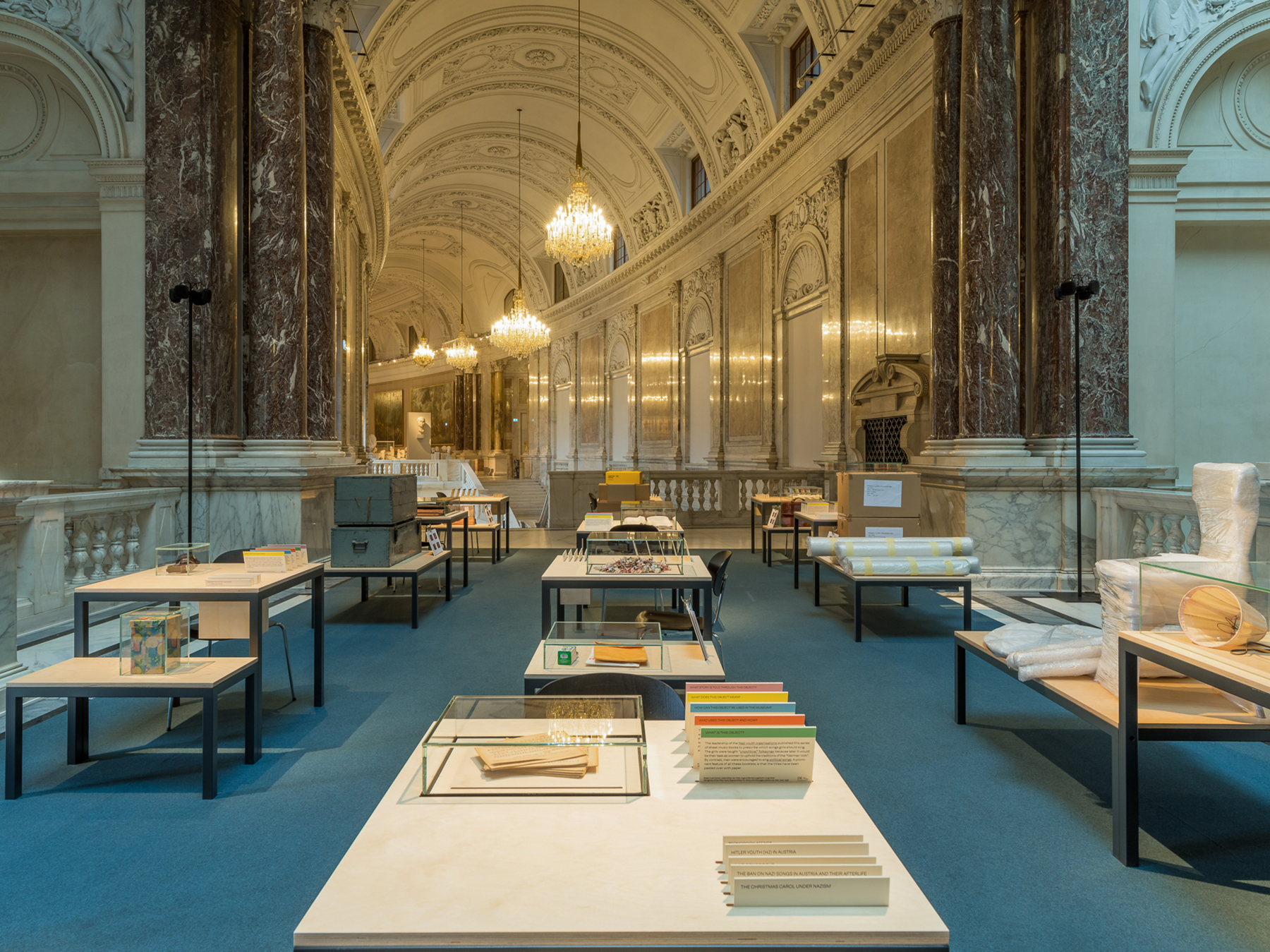
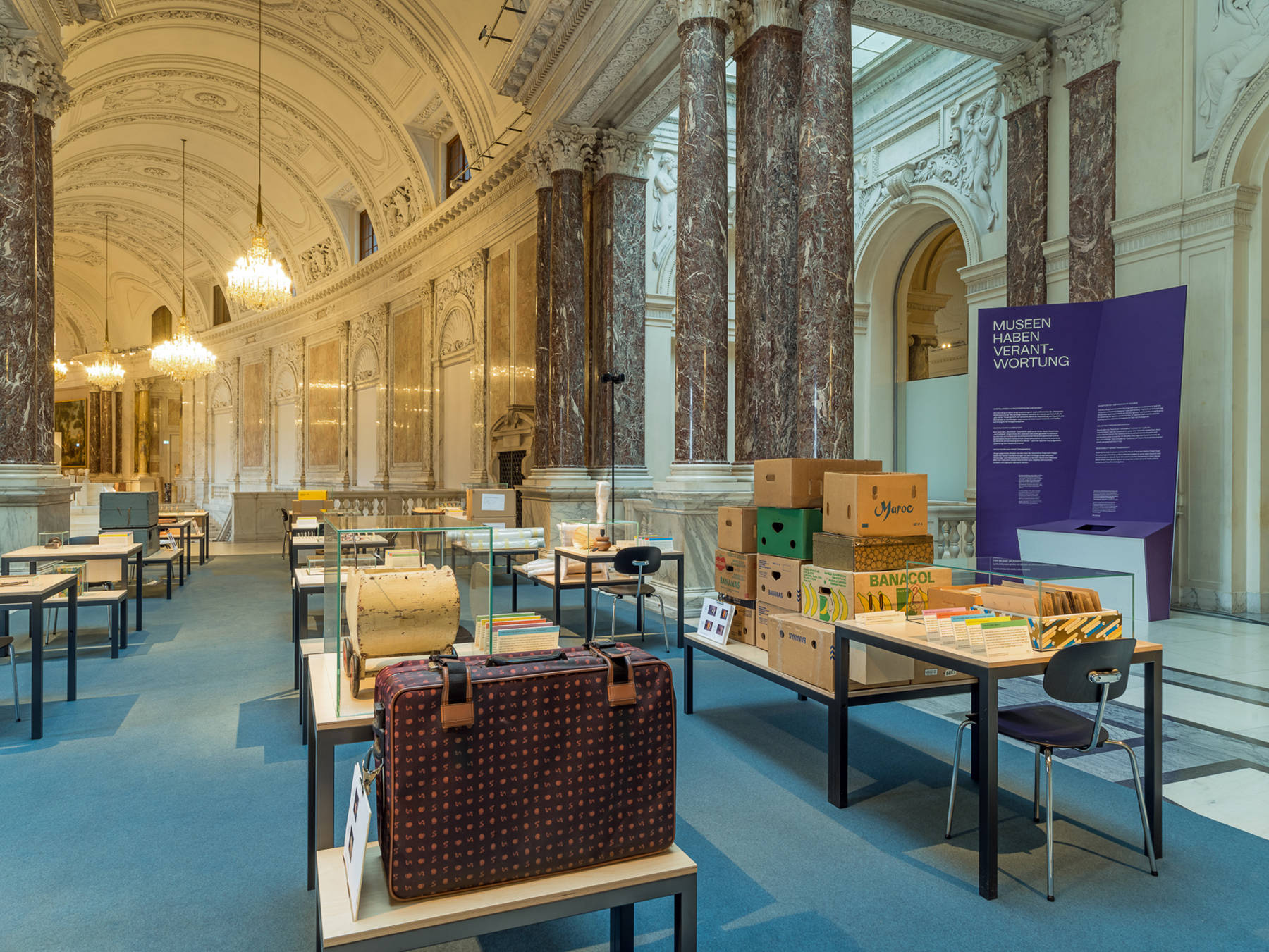
Disposing of Hitler: Out of the Cellar, Into the Museum
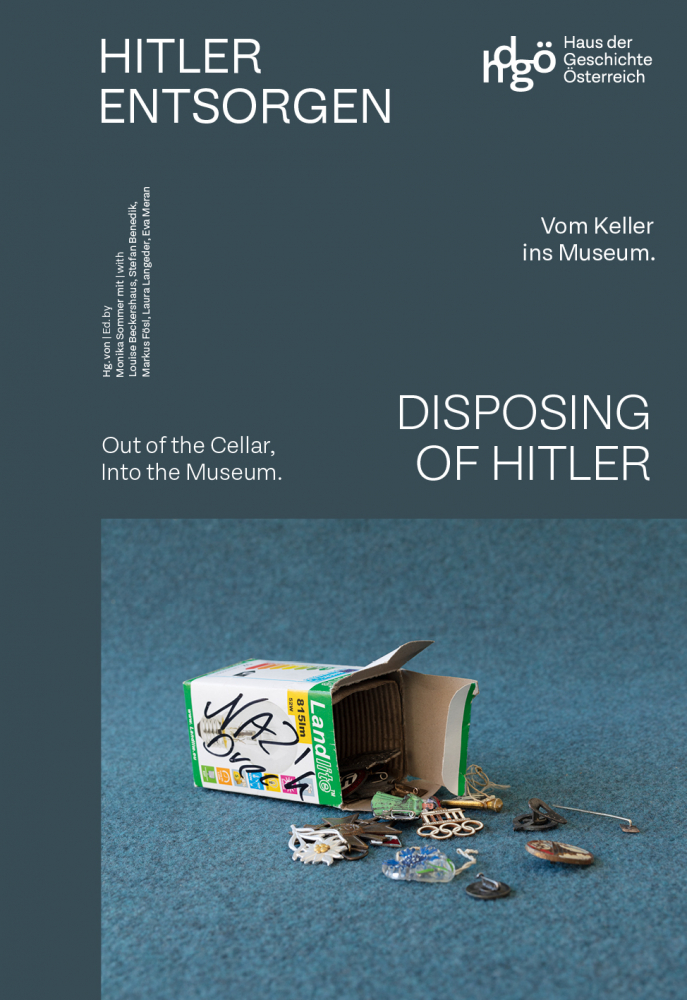
Text as PDF
Exhibiting Nazi Stuff
Gabu Heindl, in: Disposing of Hitler.
Monika Sommer mit Louise Beckershaus, Stefan Benedik, Markus Fösl, Laura Langeder, Eva Meran (Hg.),hdgö 2021
